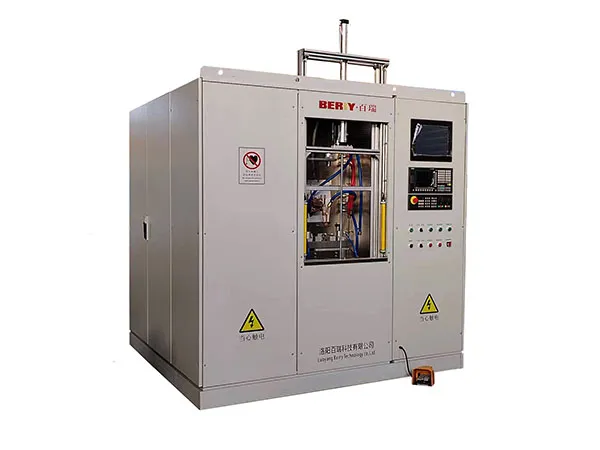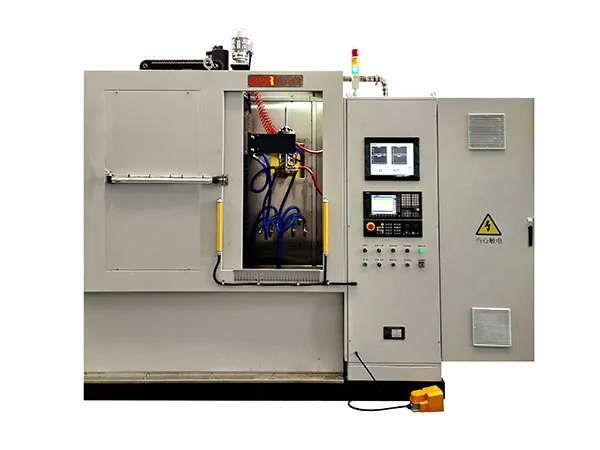time: 2025-04-17 06:23:00
Induction hardening is a type of surface heat treatment process used primarily on steel and other ferrous alloys (like cast iron). It selectively hardens the surface layer of a metal part while leaving the core relatively soft and ductile. This creates a component with excellent wear resistance, surface hardness, and fatigue strength on the outside, combined with good toughness and impact resistance on the inside.

Electromagnetic Induction: When an alternating electric current (AC) flows through a coil (called an inductor), it generates a rapidly changing magnetic field around the coil.
Joule Heating (Resistance Heating): When a conductive material (the metal part) is placed within this changing magnetic field, the field induces electrical currents (called eddy currents) within the part itself. These eddy currents flow against the material's electrical resistance, generating intense heat (P = I²R).
Here's a typical sequence for induction hardening:
Placement: The metal part (workpiece) is placed inside or very close to a specially designed copper coil (the inductor). The shape of the inductor is crucial and often custom-designed to match the geometry of the area to be hardened (e.g., a ring for a shaft journal, a contour-following coil for gear teeth).

Heating:
A high-frequency alternating current (ranging from kHz to MHz, depending on the desired depth) is passed through the inductor coil.
This creates the changing magnetic field, inducing eddy currents primarily near the surface of the workpiece.
Due to the "skin effect," the higher the frequency of the AC, the shallower the induced currents and the resulting heating. Lower frequencies penetrate deeper.
These eddy currents rapidly heat the surface layer of the part (typically in seconds) above its critical transformation temperature (austenitizing temperature – usually 750-900°C or 1400-1650°F for steels). This transforms the microstructure of the heated layer into austenite.
The heating is very fast and localized, preventing the core of the part from reaching high temperatures.
Quenching:
Immediately after the surface reaches the desired austenitizing temperature, the heating current is shut off, and the heated surface is rapidly cooled (quenched).
Quenching is often done by spraying a liquid coolant (water, polymer solutions, oil) directly onto the heated surface, sometimes integrated into the inductor coil itself ("spray quench"). In some cases, the part might be dropped into a quench bath.
This rapid cooling prevents the austenite from transforming back into its softer, original structures (like ferrite and pearlite). Instead, it forces the austenite to transform into Martensite, a very hard and brittle crystalline structure. This martensitic layer forms the hardened "case."Tempering (Often Required):
The martensite formed during quenching is extremely hard but also very brittle and contains internal stresses.
To reduce brittleness, increase toughness, and relieve stress (while only slightly reducing hardness), the part is usually tempered.
Tempering involves reheating the entire part (or at least the hardened zone) to a lower temperature (typically 150-650°C or 300-1200°F, well below the critical temperature) for a specific duration, followed by cooling (usually in air). The exact temperature and time depend on the desired final hardness and toughness balance.

Power Output: Determines the rate of heating.
Frequency: Controls the depth of heating (higher frequency = shallower depth).
Heating Time: Determines how long the surface is above the critical temperature.
Quench Rate/Medium: Affects the efficiency of martensite formation and the risk of cracking.
Inductor Coil Design: Critical for concentrating the magnetic field and heat precisely where needed.
Part Material: The carbon content of the steel is crucial; typically, medium-carbon steels (0.3% - 0.6% C) are used, as they readily form hard martensite.
Induction hardening is a fast, efficient, and controllable process that uses electromagnetic induction to rapidly heat the surface of a ferrous part, followed by immediate quenching to create a hard, wear-resistant martensitic surface layer (case) while maintaining a softer, tougher core. Tempering is often performed afterward to reduce brittleness.